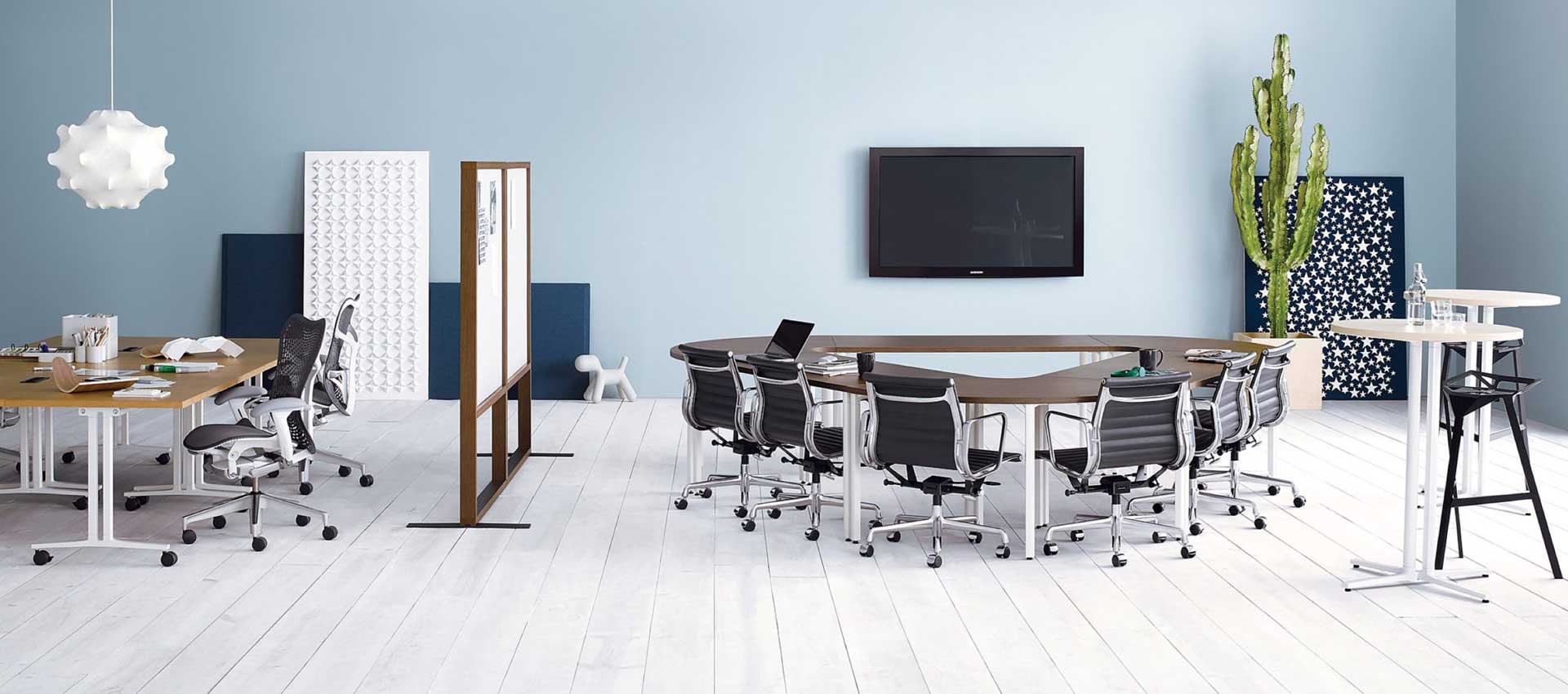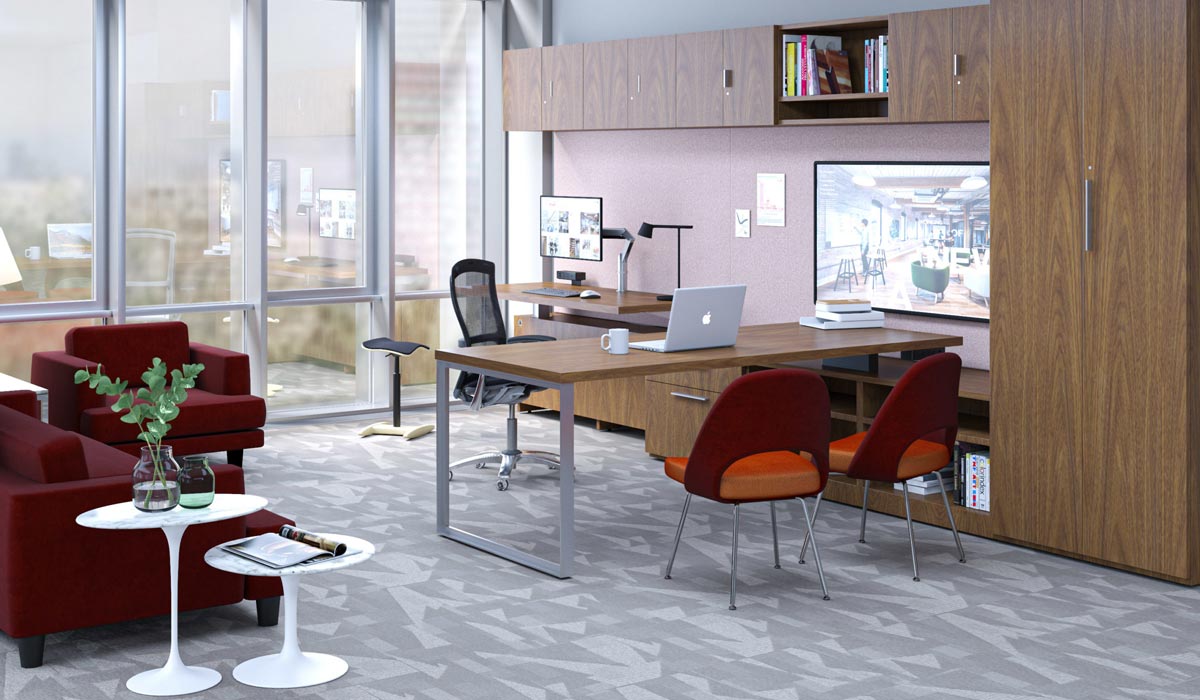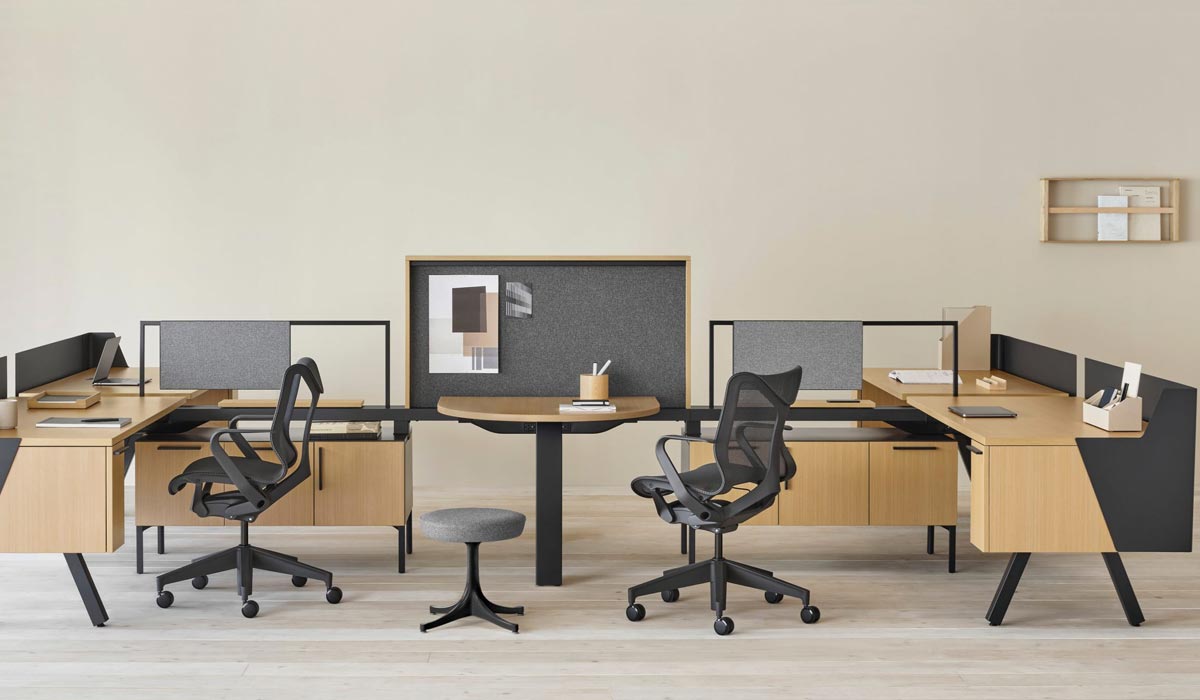Building a hybrid office? 3 things to consider
January 2, 2023

The modern workplace is ever-evolving. With more companies offering remote work options, and employees craving greater work-life balance, the traditional 9-5 in an office setting is no longer the norm. As a result, office design is changing to accommodate this new hybrid way of working as many companies are looking to meet the needs of both their on-site and remote workers. If building a hybrid office for your business is in the plan, you’ll want to consider these 3 important items.
Flexibility.
The first thing to consider is flexibility. Employees need to be able to move around throughout the day, and have access to a variety of different work settings – from private offices and conference rooms, to open lounge areas and standing desks. This flexibility is key to fostering creativity, collaboration, and productivity.
Employees can take breaks when they need, huddle in small or large groups easily and get inspired without feeling like they're confined to their desks all day long. For companies, offering a flexible office space is a great way to attract and retain top talent. It shows that you're committed to your employees' well-being, and are willing to invest in their happiness. If you're considering a hybrid office space for your company, be sure to keep flexibility in mind. It's the key to creating a more engaged team.
Technology.
The second thing you need to consider is technology. This is crucial for creating a seamless experience for both on-site and remote workers. The right technology has to be in place. This includes everything from video conferencing and collaboration tools to secure remote access and file sharing.
Another important consideration is connectivity – to the internet and to power sources. Employees who work in hybrid environments need to be able to connect to the internet and their work applications from anywhere. This means ensuring they have a good internet connection at home, in a variety of collaborative and private spaces at work, as well as access to VPNs and other remote access tools in general.
Finally, businesses have to consider how data and applications will be managed in a hybrid environment. Is data securely stored and backed up? Will the team have access to the applications they need to do their job? Will this work on-site or remotely? By carefully considering your technology needs, your company can ensure that the team has the right tools to remain productive, regardless of where they work.
Culture.
A hybrid office environment can create a more diverse and inclusive workplace, but it's important to make sure that your company culture is one that embraces and values diversity.
Not everyone has the same needs. Some people may require special accommodations, such as wheelchair-accessible spaces or quiet areas to work. It's important to be aware of these needs and to make sure that everyone has the opportunity to participate in the office, regardless of their circumstances. By keeping these things in mind, a more inclusive office environment can be created that everyone can enjoy.
According to recent McKinsey study1, an inclusive culture is increasingly becoming a competitive advantage for organizations to attract and retain top talent. Done correctly, a hybrid office supports work-life balance, team building and increases mutual respect.
Ready to create a hybrid workspace that meets (or exceeds) your company’s needs? Contact PURE Workplace today at 816.922.6575 or send us an email to get started.

